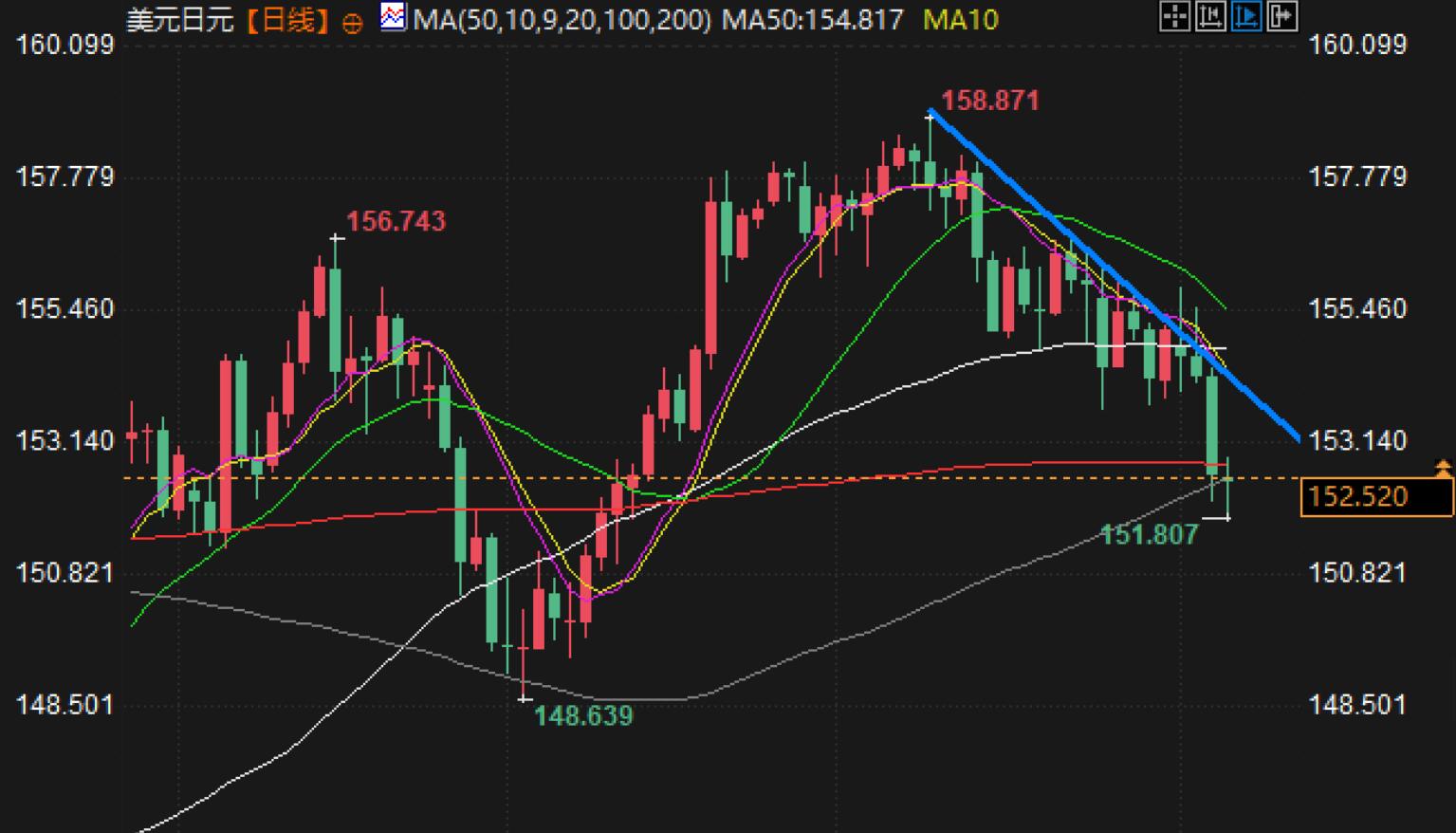Forex trading analysis: USD/JPY falls to 200 day moving average
On Thursday, February 6th, before the US market opened, the USD/JPY continued its downward trend and traded around 152.50. The recent fluctuations reflect the market's sensitivity to the global economic outlook, monetary policy, and interest rate differentials. On Wednesday, the US dollar/Japanese yen fell sharply, with an important backdrop being the Bank of Japan Governor's suggestion to possibly start raising interest rates to address inflation. But the interest rate gap between the United States and Japan remains huge, and analysts believe that the exchange rate may not undergo fundamental changes in the short term.
Despite market expectations that the Bank of Japan will adopt a tighter monetary policy, the US dollar still dominates as US interest rates are significantly higher than Japan's. In addition, non farm payroll data will be released on Friday, and the market expects that if the data is strong, it will support the expectation of the Federal Reserve raising interest rates and push up the US dollar; On the contrary, if the employment data is weak, it may lead to an increase in market expectations for the Federal Reserve to cut interest rates, putting pressure on the US dollar.
Federal Reserve officials mentioned the possibility of a rate cut, which sparked discussions in the market about the Fed's policies. In summary, the short-term trend of USD/JPY is still uncertain due to multiple factors, including differences in monetary policy, economic data, and global capital flows.
Technical analyst interpretation:
From a technical perspective, the USD/JPY has fallen back to the 200 day moving average, a technical indicator that has served as a support or resistance level multiple times in the past. The trend near the 200 day moving average and whether prices can stabilize will be key factors in determining whether the US dollar/Japanese yen can resume its upward trend.

The current price of USD/JPY has remained near the 200 day moving average and has not further broken, indicating that there is some support in the market in this region. If the price continues to remain above this technical support level, it may mean that the market will resume an upward trend in the short term. Especially before the release of non farm employment data, this support level may become a closely watched focus in the market.
However, if the USD/JPY continues to fall below the support level of the 200 day moving average, further downward pressure may arise to test lower support areas. In this situation, the January low and longer-term technical support levels will become key reference points. In addition, the downward potential of the US dollar/Japanese yen will be influenced by market sentiment, particularly changes in the Federal Reserve's monetary policy and global economic outlook.
In addition, it is worth noting that the US dollar/yen exchange rate is also affected by the yield difference between the US and Japan's 10-year treasury bond bonds. The yield difference of 10-year treasury bond, as a reflection of the market's expectations of the two countries' monetary policies, often plays an important role in the trend of the dollar/yen. The yield gap between the United States and Japan has been widening recently, providing support for the USD/JPY exchange rate. If this trend continues, the US dollar may continue to receive technical support.
From a short-term perspective, the US dollar/Japanese yen may continue to maintain a volatile consolidation state, and the key risk point for the market lies in the release of non farm payroll data. If the employment data is strong, the US dollar/Japanese yen may break through the current technical resistance and retest higher price levels. On the contrary, if the non farm payroll data falls short of expectations, the US dollar/Japanese yen may face the risk of further correction.
summary
Overall, the trend of the US dollar/Japanese yen is still full of uncertainty, with both fundamental and technical factors affecting the exchange rate. From a fundamental perspective, the interest rate differential between the United States and Japan remains the core factor determining the long-term trend of the US dollar/Japanese yen, while market expectations for Federal Reserve policies will also affect short-term trends. In terms of technology, the key support level of the 200 day moving average and the impact of non farm data may become the dominant factors for exchange rate fluctuations in the coming days.
The market is closely monitoring the statements of Federal Reserve officials, upcoming non farm payroll data, and global economic changes, especially under the influence of trade policies and market sentiment, which may trigger short-term fluctuations in the US dollar/Japanese yen. At the same time, technical indicators such as the 200 day moving average and the yield difference of 10-year treasury bond will provide more clear trading signals for the market.
Tips:This page came from Internet, which is not standing for FXCUE opinions of this website.
Statement:Contact us if the content violates the law or your rights
